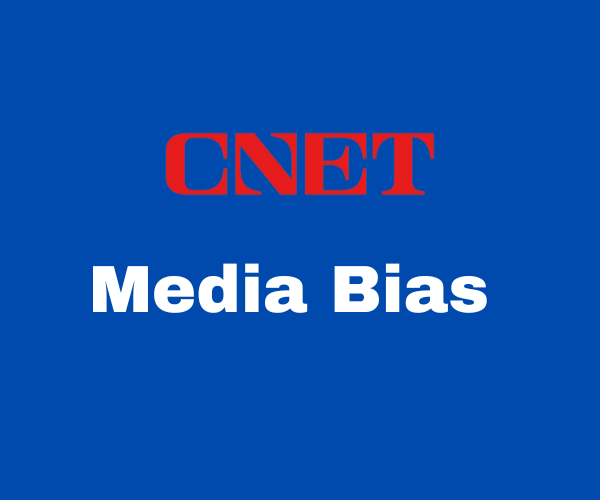
According to CNET, they “tell you what’s new and why it matters.” With 67 million global monthly visitors, 14 million social media followers and 90 million monthly views, CNET (short for “Computer Network”) is an American media source that publishes reviews, news, articles, blogs, and more with a primary focus on technology..
As such, the question of whether or not CNET is biased will be examined throughout this article. An in-depth look at the online source’s coverage and editorial decisions to determine whether or not political bias is present in their reporting. This analysis will provide a comprehensive answer to whether or not CNET Media has bias, in addition to discussing the factors that contribute to media bias in general.
How Does Biasly Rate News Sources?
Biasly’s algorithms produce bias ratings to help provide multiple perspectives on given articles. Biasly has analyzed 200,000+ news articles from more than 3,200 news sources through our A.I. technology and team of political analysts to find the most factual, unbiased news stories.
Biasly determines the degree of political bias in news sources by using Biasly’s Bias Meter Rating, in which Biasly’s team analyzes media sources’ reliability and bias and produces three scores, a Reliability Score that measures the accuracy of media sources; an A.I. Bias Score, evaluated by A.I.; and an Analyst Bias Score evaluated by political analysts. These scores are rated based on seven rating metrics including Tone, Tendency, Diction, Author Check, Selection/Omission, Expediency Bias, and Accuracy. These metrics help our analysts to determine the political attitude of the article.
Our A.I. a machine-learning system employs natural language processing and entity-specific sentiment analysis to examine individual articles and determine their bias levels. By analyzing the key terms in an article such as policies, bias phrases, political terminologies, politicians, and their nicknames, the algorithms can rate the attitude of the text. Bias scores range from -100% and 100%, with higher negative scores being more liberal and higher positive scores being more conservative, and 0% being neutral.
Is CNET Media Politically Biased?
Biasly’s rating for CNET Media is based on two scores, one derived from computer algorithms based on A.I., and the other from our Analysts. Biasly rates CNET media with a Computer bias score of Center-Right, and an Analyst score that hasn’t been determined yet– so keep a look out for that. With the information that we’ve collected so far, the source provides political coverage from an American center political perspective. While the analyst score is undetermined so far, it is typically based on an average of at least 15 articles each reviewed by a liberal, moderate, and conservative analyst. Once Biasly’s analysts have each ranked fifteen articles, they will continue to analyze more articles, which will make a more accurate analyst score. In turn, the sources will become more accurate as Biasly rates more articles.
The remainder of this article will talk about more ways to identify bias so that readers can separate opinions from facts, becoming more informed consumers of news.
Before we begin, we need to discuss bias. Bias is a natural function of humans, and we can express it both consciously and unconsciously. Bias is one of the most fundamental forms of pattern recognition in humans. This isn’t to lower the bar and say that “all things are biased,” but to explain the process in which we may come to trust certain news organizations that display patterns of coverage.
On the media’s part, there is an incentive to retain audiences, encourage them to purchase subscriptions, and rate products positively. Bias is a two-way street, people want to see news stories about things they care about, and the media needs viewers to continue their operations. This creates a positive feedback loop that influences what stories are covered and from what perspective. This also explains the actions of more liberal news organizations.
Analysis of Bias in CNET Media Online Articles
When determining bias, common metrics to use are Tone, Author, and Diction, which are the primary metrics we’ll focus on below. Tone is the attitude of the writing, while diction includes the author’s word choices. Last, the Author metric refers to the author of the article and his or her demonstrated stance on issues, discovered through past articles and social media posts.
The first article we’ll look at is titled “Google, Microsoft, Meta, Amazon Pledge AI Safety and Security at White House.” Biasly has this article rated at Center-right, indicating that limited media bias is included in this article. Genuine news reporting has a neutral tone, objective diction, and a non-biased author.
For example, the tone of this article is impartial, reporting facts such as the following:
“TikTok CEO Shou Chew is in Washington, DC, today to try and convince Congress that Tiktok can protect US users’ data and maintain safety for the millions of Americans who use the popular video app.”
“Officials are concerned US user data could be passed on to the Chinese government or that the Chinese government could dictate what content is shown on TikTok in a bid to influence public opinion in the US.”
Similar to its diction, no extreme or emotionally loaded language is included– words such as “safety,” “security,” and “trust” are used in addition to general words of basic news reporting and quotations without author opinion such as:
“You can read the entire voluntary agreement between the companies and the White House here. It follows more than 1,000 people in tech, including Musk, signing an open letter in March urging labs to take at least a six-month pause in AI development due to “profound risks” to society from increasingly capable AI engines.”
Last, author Corinne Reichert is a Senior Writer for CNET with her topics running from social media, security, pop culture, politics, and movies. Nearly all of her content is centered around technology, and she avoids inserting personal bias in her writing.
Another article we’ll look at is titled “What the Supreme Court Ruling Means for Biden’s Student Loan Plan.” Biasly has rated this article as Center-right. This rating indicates that neutral tone, diction, and no author biases have been recorded.
For example, the tone is slightly right, but the language is fairly cut and dry:
“On Friday, the US Supreme Court struck down President Joe Biden’s plan to forgive up to $20,000 in federal student loan debt per eligible borrower.”
“In a 603 split along ideological lines, the court agreed with six state attorneys general who argued that the forgiveness plan wasn’t authorized under the Higher Education Relief Opportunities for Students Act of 2003.”
Additionally, the article uses reliable statistics from the White House, stating:
“According to the White House, 44 million Americans would have benefited from the education debt forgiveness program, with 20 million seeing their balances erased entirely.”
While it is clear that the Biden administration wanted this student debt forgiveness act to pass, the article does not insert a bias in its tone indicating the author’s preference for the bill.
The diction is also neutral in its reporting and does not include any emotionally loaded language, stating that the President was “disappointed” in the ruling, but is insisting that the fight for education debt forgiveness is not over. Additionally, an explanation for the court’s opinion is seen as a “major blow to Biden’s campaign promise to tackle education debt.”
Last, author Dan Avery was a writer for CNET with an expertise in personal finance, consumer affairs, and government and policy. His personal Twitter account doesn’t reveal many other biases. Meanwhile, previous articles from the author also appear unbiased in their titles. For example, “Biden Administration Provides $100 Million to Fix and Replace Broken EV Chargers” and “American Climate Corps Will Put Thousands of Young People to Work in Green Jobs.”
Analysis of CNET Media Opinion Articles
There is a diction between opinion and reporting. While we saw two great examples of neutral reporting above, where readers were given facts and quotes from primary resources– sometimes this is not always the case. Opinions are an outlet for columnists to express their personal views on issues, something that CNET Media does not have too much of.
However, consider this example titled “In praise of (media) bias” by Matt Asay. Biasly rates this article “Somewhat Liberal,” let’s take a look at some examples of opinions in the article. Many indications of the author’s intentional bias are included, such as;
“Some time ago I discovered that I didn’t like reading ‘the news’ very much. Perhaps this resulted from reading too many British newspapers, which don’t try very hard to disguise their angle on a story. Some are pro-monarchy, some are pro-business, some are pro-Left, some are pro-Right. You choose the paper that matches your bias.”
“In the United States, we still pretend to be unbiased. I’m not sure why.”
This blog post, while informing the public on inherent media bias in American writing, is quite informative and interesting and is very beneficial for someone to read and widen their perspective. Although some emotionally loaded language is used, this example shows an opinion article where the author clearly expresses their point of view to readers.
Who Owns CNET Media?
Red Ventures, an American media conglomerate, recently bought CNET in 2020 for $500 million. Red Ventures was founded in 1922, and was a flagship brand of CNET Networks and later became a brand of CBS Interactive. Its headquarters are found in Fort Mill, South Carolina.
On its About Us page, CNET’s mission is “To help you navigate a world of accelerating change, so you are empowered to make decisions about what to do or buy next.” Pictured below is Ric Elias, Co-founder of Red Ventures is a graduate of Boston College and Harvard Business School.

Source: CNET
How to Evaluate and Uncover Bias
It can often be difficult to tell if the news you watch is biased. If you have settled on a news channel, it’s usually because you trust the information you are gaining. Unfortunately, many trust the information they are hearing because it confirms what they already believe. This is referred to as “confirmation bias.” It is important to challenge your beliefs and get third-party verification that what you are hearing is the full story. This is why we recommend using Biasly to compare different news stories side-by-side using our bias ratings to figure out what both sides think of a political issue.
Recall that Biasly gave CNET Media a Center-right bias score, although articles vary in their bias. Additionally, some articles will automatically have more or less bias than others. General news articles are known for being less biased than opinion pieces, which we saw firsthand with CNET Media. As such, it’s important to use Biasly’s News Check to help you determine the bias of what you read.






















